Starting Point This Week:
Airliner Seat Size Lore:
Be Nice If Some In The Media Relied On Facts
Seat Size: More Media Misinformation… The House version of the FAA reauthorization bill requires the FAA to investigate setting size minimums for airline seats.
USA TODAY, reporting on the story, advises us that this is important because average width of airline seats has declined from 18 inches to just 16.5 inches.
That, not surprisingly, is a blatant falsehood. Untrue, non-factual, sloppy reporting.
Let’s go to the fact sheet, again. The narrowest seats in US airline system operations today (save a couple of small-aircraft air taxi operators) is 17 inches, and all 737s have 17.2 in economy (memo to USA TODAY, they always have been that width in standard 6-across configuration), as well as A-320s and E-170/190s are over 18 inches.
There is no way that seats have shrunk in width to 16.5. Mathematically impossible.
As we’ve seen recently with other airline reporting – such as the 60 Minutes selective-data “investigative report” on Allegiant – what shows up in the media isn’t always gospel.
Caveat consumer.
_________________
Supersonic Air Travel…
It’s coming. And It’s Going To Be Positively Disruptive
China’s largest travel company – Ctrip – has announced that it intends to make a major investment in Boom Supersonic, the developer of a new 50-55 seat, 2.2 Mach airliner.
If you haven’t heard of Ctrip, it’s a $3 billion dollar – and growing – global travel conglomerate based in Shanghai.
They join a range of other global players that have invested in Boom – all of them sophisticated entities that are known for looking to the future. This new machine is expected to cut flight times in half on long-haul intercontinental routes, and do so at operating costs that will accommodate today’s range of business/first fare levels.
Not Just Faster, But A New Air Transportation Mode. Boyd Group International has completed fleet demand forecasts for Boom Supersonic, and we see not only “demand” but major disruption in airline product structure.
Very disruptive – to just about every segment of air transportation – airlines, airports, suppliers, financial institutions and – importantly – to consumers who will have a whole new travel/communication channel.
On one hand, it will offer a superior option to the existing business/first passenger segment, with travel time being far superior. On the other hand, in markets such as New York – London a 3.3. hour flight time will likely represent stimulation of demand.
Then, let’s think about effects on global airports and competitiveness of airports. Those that may be slot-restricted might be left at a disadvantage – meaning that some sectors of consumer travel will find alternative access points where airlines operate the Boom airliner.
Opening China. Then we have emerging markets such as China… there is no guarantee that the Middle Kingdom will have restrictions on the (low) sonic boom. That means enormous potential for both domestic and international supersonic service to and from interior commercial points such as Chengdu, Kunming, Zhengzhou – at a dozen other new-market opportunities. Point: lots of potential demand for this airliner.
Example: Florida-Latin America: the attractiveness of this aircraft could well deliver nonstops to key commercial points in South America… remember, this new modality focuses on high-yield business traffic. The businessman from Manaus needing to get to Central or Northern Florida could now have viable service to/from Sarasota or Jacksonville… avoiding the congestion at other gateways.
Not Just An Airliner. A Competitive Imperative. The 50-55 seat airplane, aimed at capturing and moving today’s premium first/business segment at 2.2 Mach, at fare levels similar to those currently offered, will effectively be a giant marketing hacksaw, slicing off the front cabins of current intercontinental airliners.
If a business traveler can get from New York to London (as just one of many example markets) in 3.3 hours compared to 6.5, at a similar fare, it’s a no brainer which mode he or she will choose.
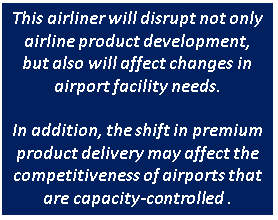 But it appears that much of the inbred aviation cognoscenti fit into that category. For now, the dogma is decided… this airliner won’t work.
But it appears that much of the inbred aviation cognoscenti fit into that category. For now, the dogma is decided… this airliner won’t work.
But give it 12 months, and the dogma will do a 180. It always does, when things get obvious.
A Competitive Necessity. BGI is the only consulting firm that has researched the Boom concept – and from the gitgo, we found that the concept has enormous merit. Globally, our forecast is for 1,300 units over the period from operational start (2024) through the following ten year period.
‘Course, the usual mamma-guy analysts (google it, if you must) have assured us from the start that the Boom concept was a pipedream – mostly based on their recollection of the Concorde, which came out before half of today’s world population were born.
Comfortable group-think lore… the usual suspects have circled the wagons.
“No cost-efficient or fuel-efficient engines exist…,” some have assured us, completely oblivious of any expertise on the subject, beyond what “everybody knows.” They do exist.
“It’s the noise issue,” was another warning, not aware that the projected sonic boom will approximate that of a car door shutting, and way below the racket made by trash trucks rumbling down Madison Avenue at 5AM, or that of a 737 on approach over Jackson Heights into LGA.
(This is not to imply that the US FAA will ever have the gumption to explore over-land use of any supersonic airliner – regardless of what the decibel levels might be, the political response would be quick, ugly and aggressive. It’s a battle they won’t take on. But the trans-ocean route opportunities are more than can gobble up 1,300 global airliners.)
Save Time? Be More Efficient? Nonsense! Customers Want Perks, Not Speed. Then there is the all-time most creative “reason” espoused by some of the all-knowing analysts to prove that the supersonic business class concept won’t work.
The argument: premium passengers want to stay in the sky longer.
They contend that the 55-seat Boom airliner, equipped only with wide, individualized recliner seats and footrests, will not be able to take long-haul premium traffic from existing-generation widebody alternatives, because it will get them to the destination too fast.
According to this argument, this premium business segment will prefer longer flight times – to get work done, and to rest up and be fresh when they arrive. (To repeat, we are not making this up – these comments have been made with straight faces…)
 See, the fantasy goes, premium class passengers will prefer the option of luxuriating in the sky for several extra hours, enjoying premium cocktails, wolfing down fine wine, dining on gourmet meals, enjoying a lavish dessert accompanied by a snifter of Courvoisier, before spreading out on a lie-flat seat to enjoy first-rate in-flight entertainment (IFE) on a giant flat TV, all warm and comfy under a lush duvet adorned by the name of some fancy designer.
See, the fantasy goes, premium class passengers will prefer the option of luxuriating in the sky for several extra hours, enjoying premium cocktails, wolfing down fine wine, dining on gourmet meals, enjoying a lavish dessert accompanied by a snifter of Courvoisier, before spreading out on a lie-flat seat to enjoy first-rate in-flight entertainment (IFE) on a giant flat TV, all warm and comfy under a lush duvet adorned by the name of some fancy designer.
Sure, getting to London hours earlier, and not having the time to wallow in luxury on the way to Heathrow will be a real deal-killer for Boom.
Funny, but there are certainly a lot of aggressive corporate executives who would rather get ahead of the competition, instead of swilling wine and playing with a 14-way lie-flat seat for seven hours.
The Current Business/First Competition Will Be Decimated. By the way, anybody who believes in this more-time-in-the-sky stuff, probably hasn’t really seen the long-haul front-cabin service shtick that some carriers pass off as “premium.” (We won’t mention carrier nationalities… but take a guess.)
Take a look… from boarding to deplaning, it’s not necessarily what’s portrayed in the advertising…
…the four-color menus passed out before departure showcase a lush level of high-livin’ vittles… but actual delivery sometimes falls a bit short…
Like, “premium cocktails” made with hooch barely a step above what’s in the bar-well at a roadside honky-tonk. Oops, that fine vintage wine selection that’s touted on the menu might not be on today’s flight. “But we do have some other options that are substantially better than Mad-Dog 20/20…” The gourmet entrée is likely to be plunked down on a pre-packaged plate or casserole dish, a la coach meals in the 1970s.
Oh, yeah, that plush duvet. When the passenger stretches out to relax, that duvet has no more utility than a blanket, embroidered designer name notwithstanding. And the viewing enjoyment available on the IFE system might resemble titles obtained in the last stages of a bankruptcy clearance at Blockbuster.
Point: The fare-paying segment that’s sitting in the front cabin today wants to get there. When the fare is the same, they’ll get on the fastest piece of warm iron leaving town. That is going to leave a lot of front-end wide-body real estate empty and seeking some type of re-development. Major international carriers would do well to start exploring this now.
Get Ready – The Airliner Demand Game Is Fixin’ To Change. The point is that this Boom Technologies airliner is going to change how airlines market their product, and how premium-segment customers fly.
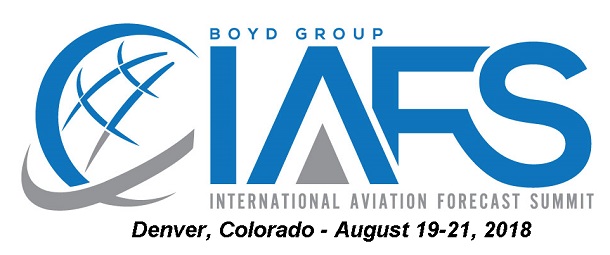 It will also materially change fleet decisions and fleet applications for global international carriers. It is going to get sudden attention from other airframe manufacturers. (And once it’s safe to do so, it will get swooning attention from the oh-so-negative aviation analyst crowd, too.)
It will also materially change fleet decisions and fleet applications for global international carriers. It is going to get sudden attention from other airframe manufacturers. (And once it’s safe to do so, it will get swooning attention from the oh-so-negative aviation analyst crowd, too.)
And don’t discount more Chinese interest. The one industry where they are materially behind the curve is in airliners. Their current and planned platforms (such as the C919, C929 and ARJ-21) are a decade late and several yuan short. A relationship with a product that Boeing and Airbus can’t duplicate would give Chinese aircraft companies and aviation suppliers a lot more access to airline front offices.
This means that as more major aviation and travel-related companies get acquainted with what this airliner will do, there’s going to the plenty more disruption.
Want To Get A View Of The New Future? Join Us In Denver this August for the 23rd Boyd Group International Aviation Forecast Summit, and get up close and personal with this next dimension in air transportation.
Not only will Boom be participating in the Summit, but we are jointly planning an exciting event to introduce this new airliner to the attendees… details coming soon.
In the meantime, if you haven’t registered for the 2018 IAFS™ – click here to reserve your space now.
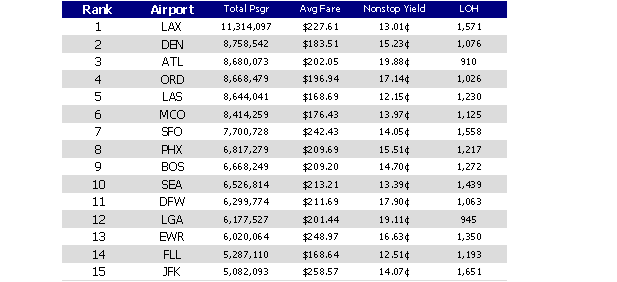
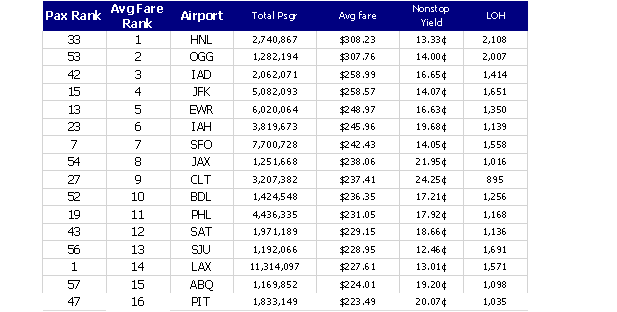

 Friends and neighbors, these are absolute anathema to the sacred foundations of air service planning. No way there’s enough demand to fill those flying machines… we have the sources to prove it, right?
Friends and neighbors, these are absolute anathema to the sacred foundations of air service planning. No way there’s enough demand to fill those flying machines… we have the sources to prove it, right? Like we’ve seen in failed attempts to bring local network airline service to places like Laughlin, Youngstown, Cheyenne, Naples and others, it’s the total travel time compared to alternative options that drives consumer choices.
Like we’ve seen in failed attempts to bring local network airline service to places like Laughlin, Youngstown, Cheyenne, Naples and others, it’s the total travel time compared to alternative options that drives consumer choices.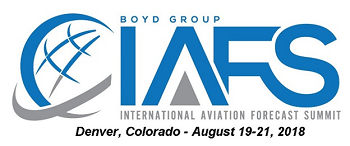
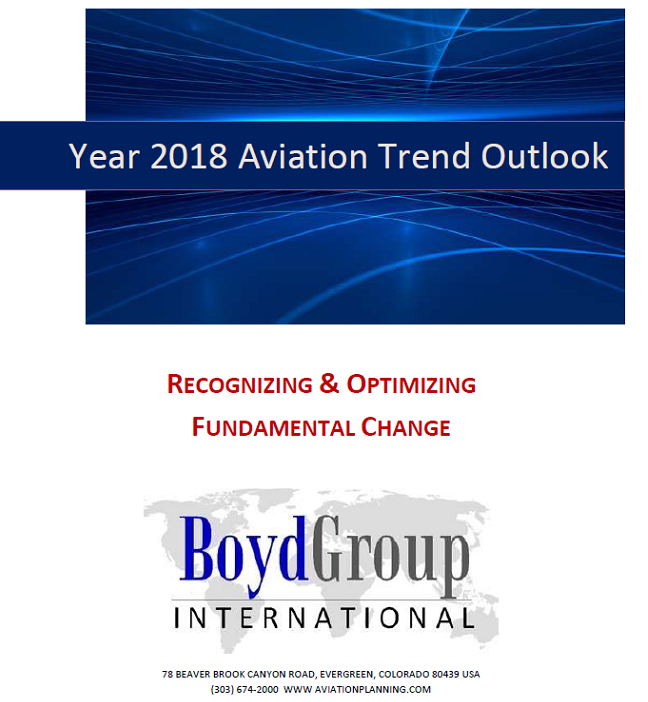 Prepare For Some New Futurist Concepts. Boyd Group International has a track record of forecasting trends that are missed by other sources. The reason is simple: we do not accept at face value the “consensus” or what may be described as “ambient thinking.”
Prepare For Some New Futurist Concepts. Boyd Group International has a track record of forecasting trends that are missed by other sources. The reason is simple: we do not accept at face value the “consensus” or what may be described as “ambient thinking.”